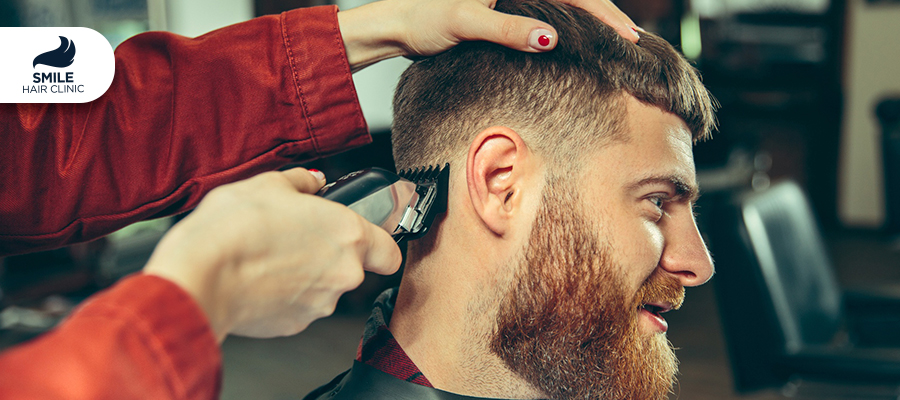When should my first cut be after hair transplantation?
If you have decided to get a hair transplant, it is one of the most exciting and progressive methods of rejuvenating your hair. But even after the transplant, extra care is needed to make sure you get the best results, like when and what should be your first haircut. This is a guide to taking your first post-transplant haircut, advising the timing and style you should consider.
At What Stage Can a Person Have the First Haircut After a Hair Transplant?
Where and when you get your first haircut and post-hair transplant is critical. If done on time, you are sure grafts will be safe; otherwise, it would ruin the recovery process. Hair transplant recovery usually entails a multi-month process, but we will give you an estimate on when it is safe for you to have that haircut:
Weeks 1 & 2: Do not cut or even touch your hair for the first two weeks after surgery. Your newly transplanted grafts still have to go through this process before they fully heal in the scalp. You should also pay heed to your surgeon and ensure proper scalp hygiene is maintained during this time.
2 to 4 Weeks: Once the first two weeks are complete, you can cut your hair surroundings (the non-transplanted hair areas)—sides and back. But avoid touching the area that has been transplanted. Some people use scissors to trim their hair, as they are less likely to irritate them.
4 to 6 Weeks: Your body is further along in the healing process by now; however, you should still avoid any deep cutting or shaving in the transplanted areas. If necessary, you can cut other regions that were not transplanted with a scissor.
6 to 12 weeks: By this point, patients can usually get their first haircut up top, but it should still be a delicate operation. If you do need to trim that hair down but the grafts make it too tricky to use clippers, opt for scissors instead, as then there is no pressure or friction on the grafts. Your barber will carefully handle your hair, especially around the fragile regions.
At 3 to 6 months, the grafts will typically be secure, and you can start treating your hair more normally. In this stage, you could already resort to using a clipper, although be careful. Most people notice great hair growth by month 6 and stop shaving or getting regular haircuts.
What to Tell Your Barber?
How to Cut Your Hair as a Hair Transplant Recipient?
For your initial trim after a hair transplant surgery, your barber must be “in the know” of your surgery so they can work around it carefully. Here is the barbers’ mindset when working on your haircut:
Begin With Scissors: Initially, scissors cuts are better than clippers. A pair of scissors is gentler on the scalp and less likely to traumatize the healing grafts. Make sure your barber uses scissors, especially if you recently had a transplant.
Keep Barbers at Bay: While you wait for your grafts to completely cement themselves, keep barbers from trying to apply pressure on the fragile transplanted areas. This also means avoiding really tight fades or buzz cuts, which usually require clippers on the skin.
Gradually Shorten Transplanted Hair: Another condition after hair transplantation is the uneven length of transplanted hair, so side and back hair are usually longer than transplanted grafts. Your barber must gradually blend the hair to look normal while avoiding getting too close to the transplanted area.
Keep Your Donor Area Neat: When you have had a strip or FUE (Follicular Unit Extraction) transplant, the donor area at the back or sides of your scalp also requires maintenance. This is usually a faster healing zone, but in the early stages, trimming that zone with scissors is still preferable so as not to irritate or force the hair to grow stronger. You should use your donor zone hair long since FUT leaves a scar at the back of the head. Otherwise, your head will look smiley from the back. This is optional in the FUE method if extraction has been done correctly.
Customize the Style: After around 6 months, you can start having a haircut customized with your barber now that your hair is grown. Based on your hair type and the look you want, you can start experimenting with different lengths and even fades.
Styling Tips Post-Hair Transplant
If you want to keep a natural and healthy look after your hair transplant, take into account the following styling tips:
Begin with a Natural Appearance: The transplanted hair needs time to grow; adopting a slightly longer, more natural appearance will obscure any inconsistencies in early growth. You can keep it in shape with an easy trim and update your look without making any drastic changes.
Skip Heavy Chemicals and Machines: In the first few months, avoid strong chemicals, straighteners, and hair dryers. These ingredients can cause scalp irritation and hair breakage.
Hydrate and Nourish: Moisturize your scalp with mild doctor-recommended products that foster healthier hair and scalp.
Once you have transplanted the grafts, they will take time to heal and grow, so wait for the right amount of time that your scalp needs. If your hair is long, opt for trims at first, then move on to bolder cuts. As long as you take care of your transplant post-op and have a decent barber, it will look full and natural in no time.

